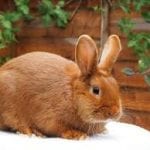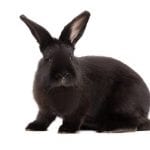Scientific Facts
| Common Name | Oryctolagus / European Rabbit |
| Body Shape | Semi-Arch/ Mandolin |
| Size | Small / Mini (34 – 50 cms) |
| Life Span | 9 years |
| Country of Origin | Southern France and Spain |
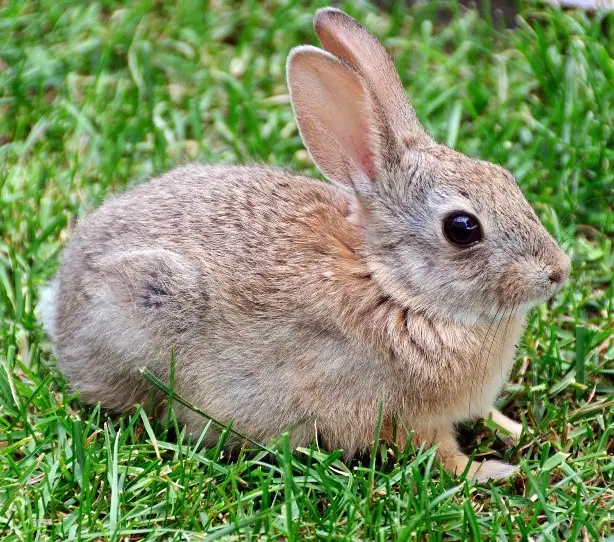
European rabbits are Australia’s most well-known and harmful environmental and farming vertebrate animals.
It was arrived first in Australia with the First Fleet after in the 1880’s it was released for hunting purposes. The increase rate of the rabbit in Australia was the highest among inhabitant mammal in the world. They can be found in any area and country, as well as in some coastal islands.
Physical Description
The European Rabbit is the origin of the existing breeds. By choosing and carefully breeding a common wild rabbit, the first breed of rabbits was created. Their ears are relatively long and upright, with a subdued dark color at the end of it. While they have fluffy and short tails, their body was formed in a mandolin shape or semi-arch.
When comparing it to other breeds of rabbit, the European rabbit belongs to the group of small rabbits, since it can only grow from the weight of 2.25 and 5.5 lbs.
Coat
The European Rabbit fur is soft and sufficiently thick to keep them from bad weather. They are also endothermic animals; they need to generate their heat internally. Thus, their fur is the only thing that helps them from overheating during the summer and freezing in the winter.
The length of their coat is from short to medium, which considers as typical kind. There is no difference between bucks and does when it comes to their appearance, aside from the fact that the male rabbits appeared to be quiet bigger with their larger heads.
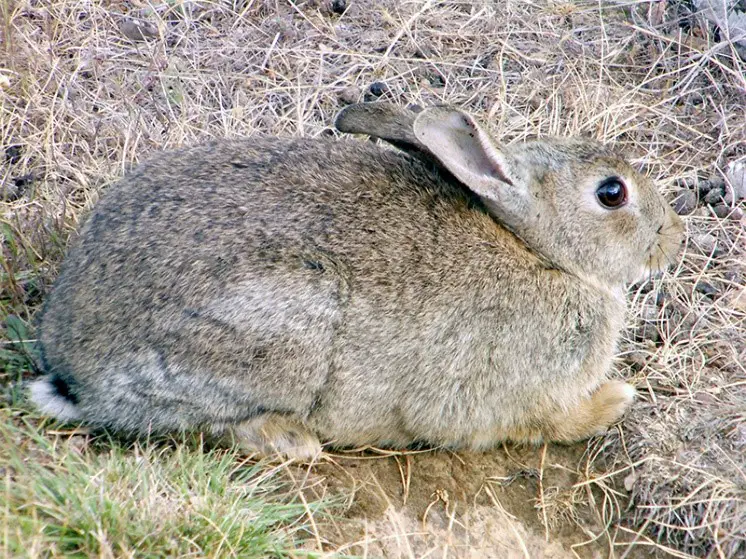
Colors
Although there are few differences to their physical qualities since they are a wild breed. The fur of European Rabbits is typically greyish-brown, occasionally with reddish and black hair in their fur, which makes it shine beautifully. Their bottom is lighter, with a brown or light grey on the stomach while their tale is white.
The Melanistic European Rabbits are not rare to see, and instead of distinctive brownish and grey color, these rabbits are much in a darker shade or total black.
Habitat
The soils have a substantial effect on rabbit density. They choose well-drained and deep kinds of grounds (such as sands and light clays), which can frequently find in the most productive farming land. The rabbit dens usually are more massive, compound, and stable on deeper soils.
The rabbits form wide dens or holes for shelter. The holes are crucial to the success of the increase of rabbits in Australia. It will not only give them protection from enemies but will also protect them from the extreme environment. Without shelter from different elements, the rabbits will not achieve their success in breeding since the newborns are very vulnerable to extreme temperatures.
In the lack of a rabbit’s dens, it can also happen above ground anywhere that has sufficient surface shelter. Like fallen woods or logs, rocks, thick groves of woody weeds or native scrub, and tons of debris can produce a perfect haven for rabbits. Human activity does not frighten rabbits; however, they may also become a nuisance around households, agricultural, and other human-made structures.
In Australia, rabbits occupy a broad range of vegetation kinds. In temperate areas, rabbits can be found nearly everywhere with black soil heaths or above 1500mbut, excluding thick forests. However, in tropical counties, the spread of rabbits is fragmented.
Although the rabbits are absent in Ashburton and Pilbara areas of Western Australia due to the high-quality diet that they needed since the soils in those areas are poor pasture and shallow.
Common Behavior
Social and territorial behaviors
To ensure that high success inbreeding, the European rabbit lives in dens with a smaller group that has 2-10 other individuals. Habitats and violence have a significant influence on the rabbits’ growth development. Thus, it helps them ensure the existence of the population. The female rabbit is more territorial than males, even though the areas frequently visited by females are not guarded. Rabbit territories are usually having a dunghill signed.
The size of their home depends on their environment, shelter, food, shield from enemies, and breeding spot. Although it is usually small, surrounding about 0.3-0.7 hectares excluding in times when the rabbit density is low and when there is a large amount of high-quality food. The range for male rabbits is likely more extensive than those occupied by females.
The European rabbit occasionally wander far from its den: when feeding on cultured fields, they usually move 25 meters away from its hole, and scarce move of 50 meters away. They possibly will transfer as far as 500 meters following a sudden change in the environment, such as harvesting crops. This kind of activity could be an anti-predator adjustment. Rabbits move three times further away from their dens in areas where predators or enemies are in rigorous rule, than those in areas without predator control.
The European rabbits are a sociable animal, which lives in secure communal groups, hubs around females, and sharing access to their warrens. On the other hand, social formation tends to be lacking in areas where the creation of den is relatively easy. Supremacy hierarchies exist in equally for both does and bucks. Among bucks, the position is established through access to do. The dominant bucks will be siring the mainstream colony’s offspring while the dominant does have primary access to the best nesting spot. The competition over such sites frequently leads to the severe injury or death of the rabbits. Minor does, mostly in big colonies, usually use single-entrance as an option as breeding sites far away from the main den, hence making them exposed to a fox or other predator.
Burrowing behavior
The European rabbit’s warrens appear mainly on banks and slopes, where there is efficient drainage. The warren entrance is usually 10–50 cm in diameter and can be easily identified by the exposed soil at their mouths. Regular passing of tenant rabbits prevents the increase and growth of vegetation. Large warrens are made with composite digging, which may go down to depths of several feet. They are not built on any comprehensive plan, and it only improved and developed through the promiscuous activities of various generations. Excavating is made through pulling of the soil backward with their forefeet and tossing it between the back legs, which spread the substance with their kicking movements.
While most warrens are a dig from the outer, other dens have holes dig from the inside, which serves as an emergency exit when escaping below ground from their predators. These holes typically descend vertically to 3–4 feet, and the naked soil characteristics in their mouths are lacked from den entrances. As kittens sleep in chambers lined with grass and fur, adults rest on the naked earth, possibly to avoid damp, with warmness being protected by huddling. Though both gender dig does do it more proficiently in a more extended time.
Communication
The European rabbit is typically a quiet animal, although it possesses at least two vocalizations. The most recognized is the high treble squeal or scream. This distress call is in comparison to the howl of a piglet. This sound expressed when in tremendous distress, like being caught by a trap or predator. For spring, bucks convey satisfaction by producing grunting sounds when moving towards other rabbits. These sounds are comparable to strident hiccups and are release with their mouth closed while aggression uttered with a low groaning.
Diet and Feeding Habits
Oryctolagus cuniculus is a widespread herbivore, consuming a different diet of leaves, grasses, tree bark, and roots. They were known by the gardeners that eat cabbage, lettuce, grains, and root vegetables.
The European rabbit or Oryctolagus cuniculus (common rabbit) is a type of rabbit that is native to northwest Africa (Algeria and Morocco) and south-western Europe (Portugal and Spain). It is also identified as invasive types since it has been broadly present to all countries in the continents, except for Antarctica and sub-Saharan Africa. Having them has disturbing results on local biodiversity, ecosystems, and environments. Australia has struggled the most with European rabbits, as they lacked natural predators.
The European rabbit is recognized for the system of digging holes, called warrens, where they use most of their time once done eating. Rabbits are altricial, unlike the associated hare; the young that have been born in a fur-lined nest in the den are furless and blind. The young depend on their mother.
Domestic rabbits (generally identified as basically rabbits) are any of some of the types of the tamed European rabbit. The female rabbits are called does; males are called bucks. A former name for a grown-up rabbit is coney, while the rabbit is called only to the juvenile mammals. Lately, the word kitten or kit has been adopted to apply to a juvenile rabbit. A juvenile bunny is called a leveret; this name is occasionally utilized to a juvenile rabbit as well.
Reproduction and Life Cycle
Rabbits usually are recognized as fast reproducers. The European Rabbit is skilled at reproducing year-round, though the majority of the mating happens in the first part of the year. Females are capable of having many litters per year, and it is not rare for embryos to have an abortion in the womb. The cause could be social or environmental stress.
In the European rabbit’s mating system, the leading bucks show polygyny, while lower-status individuals (both does and bucks) frequently build monogamous reproduction relationships. Rabbits give a sign when they are ready to mate by marking other animals. They will also inanimate things with an odoriferous material concealed through a chin gland; this process is known as “chinning.” Although male European rabbits can occasionally be friendly with one another, vicious fights can flare up among bucks in the course of the breeding season, usually January to August.
A progression of litters (generally 3-7 kittens each) is created; however, in overpopulated regions, through intrauterine resorption, a pregnant doe could lose all their embryos. Before giving birth, the doe will build a separate den known as a “stab” or “stop,” generally in an open meadow far away from the central hole. These breeding warrens are usually a few feet long and are in the area with moss and grass with coat pulled-out from the doe’s belly. The breeding den keeps the kittens from predators and adult bucks.
The growth phase of the European rabbit is 30 days, with the gender ratio of male to female kittens drawn to be 1:1. Better maternal investment over male offspring could affect higher birth weights for bucks. Kittens born to the main doe and buck that have better breeding and feeding grounds be likely will grow stronger and bigger. They can also grow to be more dominant than kittens born to secondary rabbits. It is not unusual for European rabbits to mate once more instantly after giving birth, with several kinds to watched and take care of previous young while pregnant.
Female European rabbits foster their kittens once a night and only for a few minutes. Once feeding is complete, the doe closes the entrance to prevent the vegetation and soil. The native southern French and Iberian variety, European rabbit kittens could have a growth rate of 0.18 oz (5 grams) per day, while such kittens in non-native ranges could grow to 0.35 oz (10 grams) per day. The weight at birth is 1.1–1.2 oz (30–35 grams) and could increase to 5.3–7.1 oz (150–200 grams) by 21–25 days in the time of the weaning period.
The European rabbit kittens are born nearly naked, deaf, and blind. Their ears are not capable of doing any movements until they reach ten days, and can they can raise it after 13 days. Their eyes open after 11 days of birth. At 18 days, the kittens start to leave the den. Sexual adulthood in bucks is achieved at their four months, whereas does can start to breed at three to five months after their birth.
Life Cycle
Rabbits required food rich in protein and fresh growth crops to encourage breeding.
Breeding begins at the autumn break continuously until vegetation dries off, which generally happens in early summer. Spreading and quick population growths take place during the breeding season. Rabbits are defenseless to flooded dens and exposure to cold and wet seasons.
Breeding stops and rabbit death is mostly high during the month of summer due to lack of food and water, diseases, and high temperatures. Early autumn and late summer are considered the best time to control rabbits since their populations are physically low.
Death, mainly in the young is high. More than 80 percent of rabbits die before they reach the age of three months.
Sub-adult males scatter as territories develop into more distinct at the beginning of the breeding season.
In the wild, rabbits can live for 1.5-2 years.
Offspring
Rabbits are identified for their voracious reproductive behavior for a good cause. They breed three to four times each year. Since only 15 percent of the baby rabbits can reach their first birthday, as stated by the Animal Diversity Web (ADW). Thus, to guarantee the population growth, rabbits produced more babies.
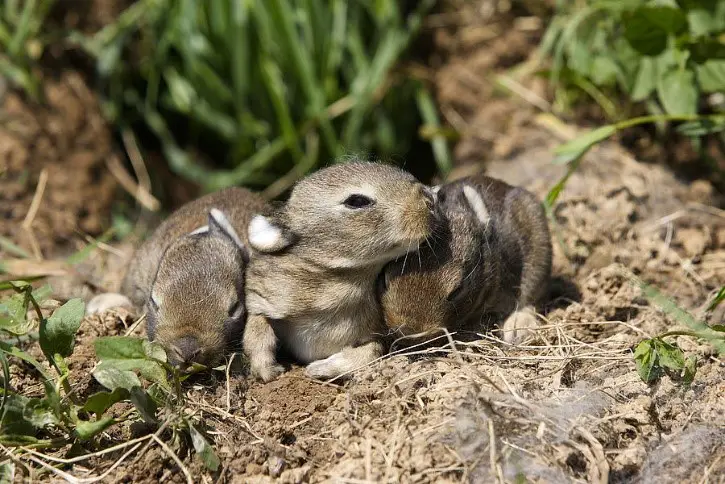
Each reproduction can produce three to eight infants, termed kits or kittens. (“Bunny” is merely a friendly alias for a rabbit, juvenile or mature, according to Small Pet Select.) Afterward, on their four to five weeks, a kitten can take responsibility for themselves. Within two or three months, it can start a family of its own. An area can rapidly become filled with rabbits when there is a lack of natural predators.
Dispersal
Rabbits possess huge rates of generally spreading by broken down into two distribution procedures during and right after the breeding season. There is 60 percent of a juvenile male, and female rabbits scatter from the breeding shelter looking for vacant dens and protected above the territory sanctuary.
Before the breeding season in late autumn and early winter, a second dispersion happens with sub-adult males transferring to new places.
Most of the dispersion is preferably in short distance with rabbits joining neighbor social groups through activities of up to 20 km have been recorded. Rabbits shift from areas of high rabbit population to regions with lower population.
Rabbits are continually looking for new areas to begin. During dispersion, rabbits are exposed to many dangers like environmental extremes and predation. Regardless of common belief, rabbits do not eagerly dig new dens; instead, they prefer to find an unused den to dig.
Pet Care
Although European Rabbits dwell in the native, rather than as household pets, their fundamental requirements are not that extremely complex than those of most tamed breeds.
Their intake comprises of legumes, hay, and offshoots. In inhabited regions, they likewise have a path to yields, so they consume veggies and fruits and veggies. The fibers like branches or wilted hay (grass) serve these bunnies scrape down their teeth, and satisfies all the dietary demands this breed possesses. Throughout the winter, these charming wild bunnies gnaw on the bark of trees, bulbs, and remaining plants.
They are night-loving earth occupants, and they build their nests out of field ranges, like parks or gardens, or forest scraps. Their territory requires to enable them to efficiently create a refuge from the various animals that profess a menace to their continuance, and where they can excavate tunnels in which they reside.
The European Rabbits are famous for their bizarre den arrangement (apparent in their Latin sign), as they build a complicated method of twisted mines in the territory identified as “warrens.” Numbers of bunnies can remain in a warren, where they support their juvenile and remain secure from threats of the wilderness.
Disease
- Some microbes influence the respiratory manner of European rabbits.
- Some viral infections like rabbit pox, myxomatosis, etc. contaminate the host cells of the rabbits’ frames, hitting the cell completion of the European Rabbits, and ultimately ending in producing a tumor.
- These rabbits also become tainted by yeast, fungi, molds, etc.
- Some bacteria change the completion, reproductive function, and can eliminate the rabbits.
- Organisms like pinworms, hookworms, flukes, tapeworms, flatworms, etc. can alter the European rabbits, though might be deadly.
European Rabbits’ Contact with People
- European Rabbits are the most commonly domesticated rabbits.
- European rabbits are a spiteful species to farming; therefore, they are a primary menace to the farmer society and in turn, to the atmosphere.
- In primeval days, European rabbits were tracked down for meals. The species is yet captured by some of the wild races in Africa and Australia.
Impact
Impact on ecosystems and waterways
Rabbits demandingly feed on particular species of bushes at crucial phases of development, such as seedling establishment and seeding. Rabbits can seriously influence the recruitment or regeneration of risky plant communities. In some cases, the impression produced by rabbits on plants is frequently substituted with offensive and/or tasteless grass species.
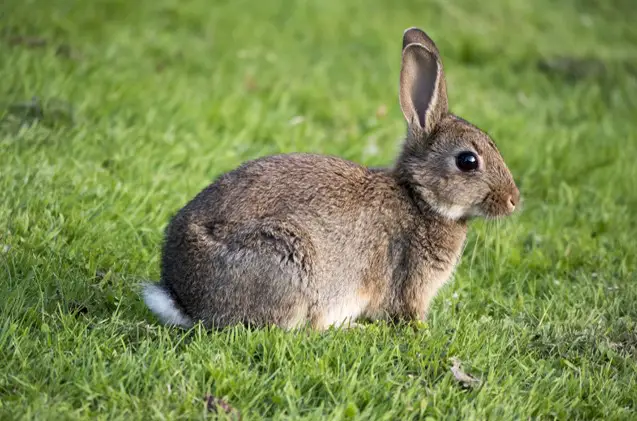
Study in semi-dry places has revealed that rabbit weights of 0.5 per hectare (one rabbit per two hectares) can critically harm some shrub species. Study workers have discovered there may be no secure rabbit density for some woods and bush seedlings.
Rabbit destruction to natural plants can severely detriment local animals. In particular regions, rabbits are in immediate conflict with the local environment for habitat and food. Environmental variations correlated with high rabbit figures have been accused of the vanishing of the pig-footed bandicoot, Chaeropus ecaudatus, and the greater bilby Macrotis lagotis, and for setting several other species under pressure.
The influence of rabbits (in succession with kangaroos) in ranchland national parks have occurred in native shrubs and animals being in a minor situation with little possibility of salvation.
Rabbit distributions may maintain estimates of predators such as felines and reynards, consequently raising stress on native animals, especially those in severe mass scales beneath 5 kg.
Extreme grazing pressure by rabbits adds to the damage of property through soil depletion. These depletion impacts direct to off-site dilemmas, such as decreased water conditions, improved soil movement, which may acquire valuable improvement proposals.
Agricultural and economic impacts
In 2009, the nationwide influence of rabbits through wasted horticultural composition was calculated at $206 million per year. In consolidated data for Victoria, rabbits and Tasmania are assessed to have cost nearly $30 million in wasted production for the sheep, beef, and yarn manufacturers per year.
Farmers in South Australia were told to have started driving off their homeland because of rabbits as quick as 1881. This was solely 22 years following their presentation to Australia and merely six years after they have certified pest mammals in South Australia.
In 1935, it was calculated that if rabbits were annihilated, the State of New South Wales solely could directly take another 12,000,000 lambs.
In 1952, the production raise after the expanse of myxomatosis was value an added $68M, and in 1953 the rise in Australia’s cloth clip was determined at 30 million kgs. By 1960, lamb figures had progressed from 88 million to over 152 million.
A rabbit feeds more intimately than domestic stock declining permanent fields during summer, conceivably excreting them from authorized meadows. The field is then expected to be trespassed by latifolious grasses and yearly weeds. In merely three years of high rabbit densities, the sanctuary of subterranean clover has been determined to decrease from 75 percent to 20 percent.
Rabbits also influence soil erosion reclamation and revegetation plans by filling on lately established plants or burrowing. Even low figures of rabbits can possess an overwhelming impact on tree-planting plans or intense garden services. Rabbits likewise induce harm to seed yields and have remarkably lessened product harvests in several regions.
Efficient rabbit administration on a farm near Colac has approved an expansion from 1.75 DSE (dry sheep equivalent) to 7.75 DSE over five years.
A buttery farmer in the corresponding Colac district has expanded his milk product by 300 percent and multiplied his food crops over 5 years simply by attacking his rabbit obstacle.
In a case in south-western Victoria, two fields each a hectare in measurement, one guarded toward rabbits, the opposite defenseless were analyzed over two months. In the initial month, the preserved space sustained 38 sheep each day, as opposed to twelve on the unguarded state. In the following month, the preserved section raised 45 sheep, whereas the defenseless range could sustain merely seven.
Availability
Oryctolagus cuniculus, likewise called a domestic rabbit, a European, or an Old World, is the only species in its genus. The ultimate Ice Age-restricted species to the Iberian land and small cities of northwest Africa and France, but because of human movement and adjustability of this species, European rabbits today live in the wild on every mainland except Antarctica and Asia. Domesticated O. cuniculus may be observed worldwide.
Conservation
The European or domestic rabbit is regarded inside the near-threatened area by the IUCN. Seen across the world, experts believe most distributions are descendants of tame rabbits that were rescued in the wild. It is endemic to the Iberian Peninsula, and in that region, distributions have weakened as much as 95 percent from its 1950 figures, and approximately 80 percent of its 1975 symbols. The slump is connected to environmental destruction, illness, and shooting. Rabbits are deemed annoyances by several gardeners.
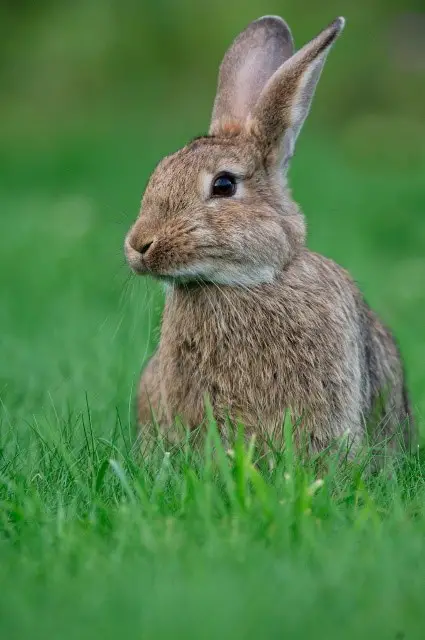
Facts
- Rabbits can be extremely artful and agile. To seize away from a predator, a rabbit will move in a diagonal pattern and attain velocities of up to 29 km/h (18 mph), according to National Geographic.
- Their ears can get to 10 cm (4 inches). This humongous range allows them to better hear predators that may be approaching. It also enables them to remain fresh in scorching atmospheres. Extra body temperature is discharged through blood vessels in the ear.
- Their eyes are shaped for security, too, considering each eye can turn 360 degrees. This permits them to view behind them without turning their heads.
- Rabbits don’t take loads of nourishment from their nutrition. They frequently consume their stool to obtain any leftover nutrient that their digestive system may have avoided the first time.
FAQs
How do European rabbits reproduce?
In dry areas, rabbits require access to water, but elsewhere they get sufficient moisture from their food. Wild rabbits can start breeding at four months old and may provide five or more litters in a year, with up to five young per litter. In less desirable circumstances, they can still produce one or two litters each year2.
How fast can a European rabbit run?
The fastest of the hares and rabbits, Jackrabbits, reach velocities of approximately 45 mph (about 70 km/h).
Where is the European rabbit now?
Highly adaptable, the European rabbit now resides every continent except Antarctica and Asia. It is general in Western Europe including the British Isles, Sicily, Sardinia, Corsica, and the Balearic Islands; and Northwest Africa
Why are European rabbits endangered?
Due to the immense distribution force of the European rabbits, they are a severe hurdle to the environment and crops. Between the 1950s and 1960s, the rabbits were deliberately poisoned with the virus of the condition of myxomatosis to lessen their population.
Why was the European rabbit introduced?
The European rabbit was taken to Australia as an associate animal by early immigrants. It sometimes escaped but displeased to remain in the Australian bush. In 1879 wild rabbits were deliberately sent to Victoria to provide games for wealthy settlers to shoot.
